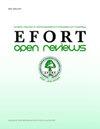The evolution of poller screws.
IF 4.3
2区 医学
Q1 ORTHOPEDICS
引用次数: 0
Abstract
Compared to other techniques, poller screws with intramedullary nailing are technically simple, practical, and reproducible for the fixation of metaphyseal fractures. In addition, poller screws do not require special instruments or hardware and are minimally invasive. This review takes a historical perspective to evaluate poller screws holistically. A non-systematic search on PubMed was performed using 'Poller screw' or 'Blocking screw' to find early use of poller blocking screws. Relevant references from these primary studies were then followed up. In 1999, Krettek et al. first coined the term poller screws after the small metal bollards that block and direct traffic. Poller screws were introduced as an adjunct to aid the union of metaphyseal long bone fractures during intramedullary nailing. However, as more evidence was published, the true effectiveness of poller screws was not appreciated, leading to split opinions. Through our research, we have built upon our understanding of poller screws, and we present a novel classification of poller screws over the years while exploring our novel technique and what we believe to be the fourth generation of poller screws. Currently, there is a paucity of research focussing on poller screws. However, studying the original evidence regarding poller screws through the most recent articles has demonstrated a confusion of research in this field. Therefore, we suggest a more organised approach to classify the use of poller screws.花粉螺钉的演变
与其他技术相比,带髓内钉的轮状螺钉在固定骺端骨折方面技术简单、实用且可重复。此外,花轮螺钉不需要特殊器械或硬件,属于微创技术。本综述从历史角度出发,对花轮螺钉进行全面评估。我们使用 "花轮螺钉 "或 "阻断螺钉 "在PubMed上进行了非系统性搜索,以查找花轮阻断螺钉的早期使用情况。然后对这些主要研究的相关参考文献进行了追踪。1999 年,Krettek 等人根据阻塞和引导交通的小型金属柱首次创造了阻塞螺钉(poller screws)这一术语。髓内钉作为一种辅助工具被引入,用于在髓内钉钉入过程中帮助骺端长骨骨折的结合。然而,随着更多证据的公布,人们并没有认识到髓内钉的真正功效,导致意见分歧。通过研究,我们加深了对花轮螺钉的理解,并对多年来的花轮螺钉进行了新的分类,同时探索了我们的新技术和我们认为的第四代花轮螺钉。目前,有关花粉螺钉的研究很少。然而,通过对最新文章中有关花粉螺钉的原始证据进行研究,我们发现这一领域的研究非常混乱。因此,我们建议采用更有组织的方法对花粉螺钉的使用进行分类。
本文章由计算机程序翻译,如有差异,请以英文原文为准。
求助全文
约1分钟内获得全文
求助全文
来源期刊

Efort Open Reviews
Medicine-Orthopedics and Sports Medicine
CiteScore
6.60
自引率
2.90%
发文量
101
审稿时长
13 weeks
期刊介绍:
EFORT Open Reviews publishes high-quality instructional review articles across the whole field of orthopaedics and traumatology. Commissioned, peer-reviewed articles from international experts summarize current knowledge and practice in orthopaedics, with the aim of providing systematic coverage of the field. All articles undergo rigorous scientific editing to ensure the highest standards of accuracy and clarity.
This continuously published online journal is fully open access and will provide integrated CME. It is an authoritative resource for educating trainees and supports practising orthopaedic surgeons in keeping informed about the latest clinical and scientific advances.
One print issue containing a selection of papers from the journal will be published each year to coincide with the EFORT Annual Congress.
EFORT Open Reviews is the official journal of the European Federation of National Associations of Orthopaedics and Traumatology (EFORT) and is published in partnership with The British Editorial Society of Bone & Joint Surgery.
 求助内容:
求助内容: 应助结果提醒方式:
应助结果提醒方式:


